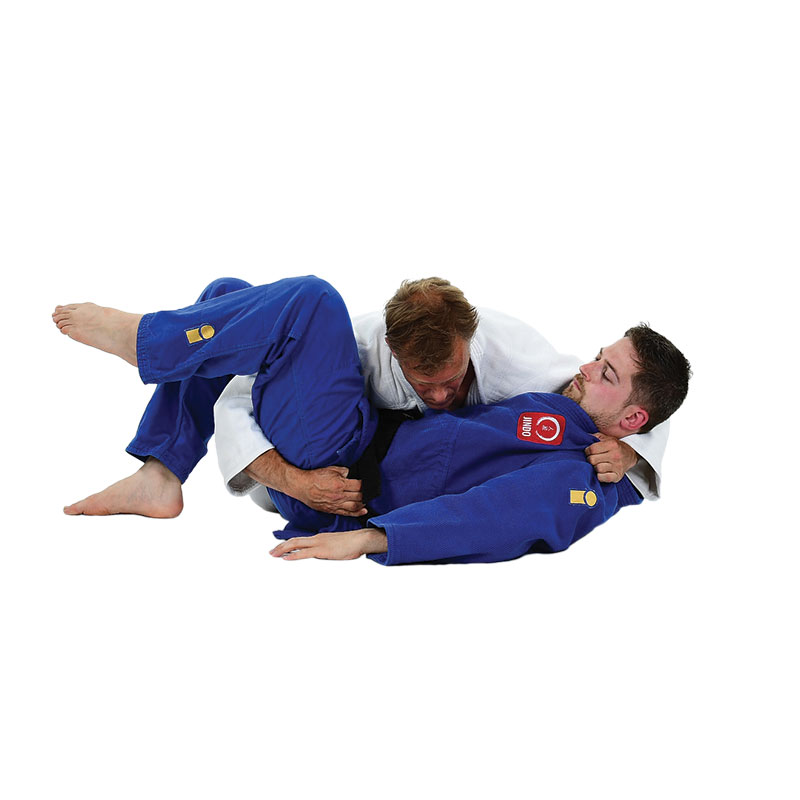Yoko-shiho-gatame 横四方固
(Side Four-Corner Hold)
Classification: Katame-waza → Osae-komi-waza (Holding Techniques)
Yoko-shiho-gatame is a classic side-control hold in judo. The name means “side four-corner hold,” referring to the four key contact points tori uses to immobilise uke. This technique is often used in competition and kata and offers strong positional control when executed correctly.
Execution
-
Tori lies at a right angle to uke, facing uke’s head from the side.
-
With the left hand, tori reaches under uke’s left shoulder to grab the belt or back of the gi.
-
The right arm reaches between uke’s legs to control the far hip or pants.
-
Tori’s chest is pressed down onto uke’s torso, hips are low, and knees are spread for base and control.
-
The body weight is distributed across four anchor points: both shoulders and hips of uke.
This hold allows tori to pin uke firmly without relying on brute strength, making it efficient and effective.

Escapes
Several escape options are available to uke depending on tori’s control:
-
Sankaku-jime counter:
Uke creates space by using ebi (shrimping movement) and tries to trap tori’s head and arm between their legs, setting up a triangle choke (sankaku-jime). Uke then grabs the nearest leg of tori and rotates it overhead to complete the escape. -
Leg entrapment (hook and slide):
Uke attempts to insert a leg beneath tori’s body and hook tori’s leg, breaking the four-point control by compromising the base. -
Bridge and reversal with belt grip:
Uke grabs tori’s belt and performs ebi to lure tori into overcommitting. Using this force, uke bridges and reverses tori over their body. This is not a straight lift—uke needs to extend and angle their own body to succeed.
Tip: The best escapes often start by provoking a reaction from tori—push, then pull, or escape one way to draw pressure before switching directions.
Variations
Several practical variations exist to suit different situations:
-
Arm switch: Tori releases the leg grip and uses both arms to control uke’s shoulders for more upper-body dominance.
-
Collar handoff: Tori passes their own gi collar to the arm controlling uke’s neck, anchoring the grip for better chest pressure.
-
Arm trap: If uke attempts to escape, tori can trap uke’s arm under their own chest and pin it to the mat, reducing uke’s mobility significantly.
Biomechanics
Yoko-shiho-gatame utilises a wide base of support and maximum chest-to-chest contact to immobilise uke. The arms act as levers, one anchoring the hip and the other the upper body. The key biomechanical principle is distributed weight and pressure, allowing tori to hold uke down with minimal energy.
Did you know?
Yoko-shiho-gatame is often the go-to pin for judoka in competition because of its strong positional control and transition options. It’s commonly taught alongside tate-shiho-gatame and kami-shiho-gatame, and together these form the “shiho trio” (four-corner pins from side, top, and mount). In advanced groundwork (ne-waza), judoka often flow between these positions depending on uke’s resistance, showing judo’s core principle: “Ju” – flexibility and adaptability.